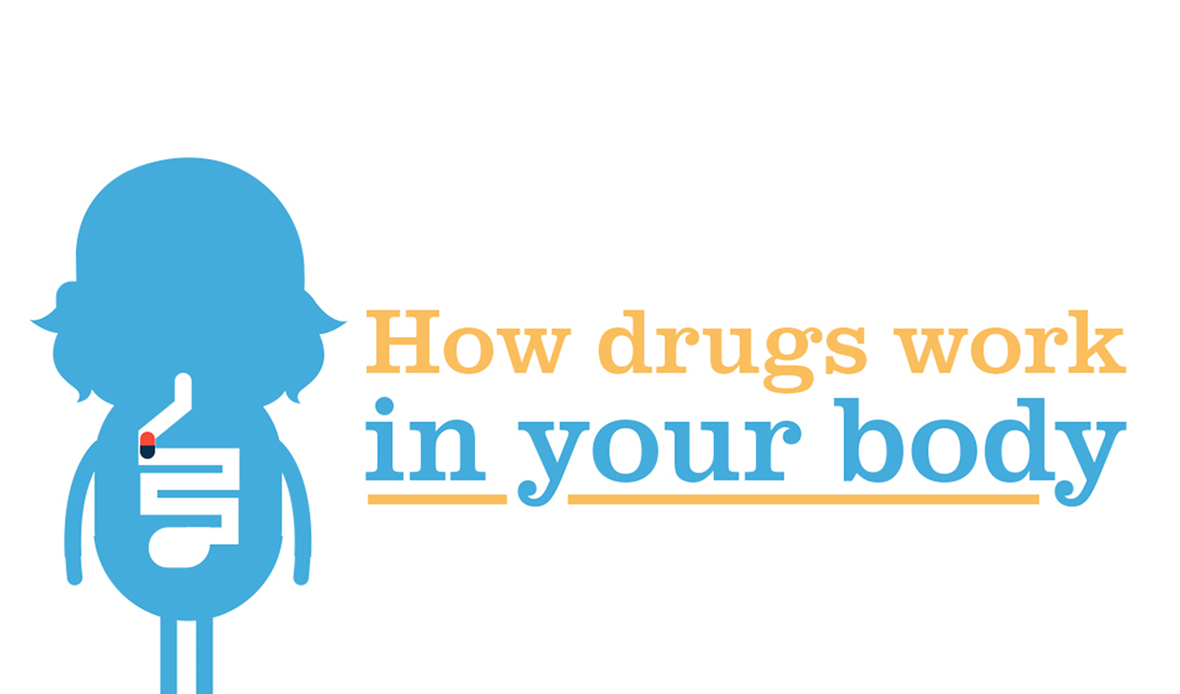
Have you ever wondered how you can swallow different pills meant for different things and they can all do their job? Prescriptions. Over-the-counter medicines. Dietary supplements. Botanicals. They all have their jobs–and they often do them well. But how do they know where to go? Let’s walk through the end to end process of how drugs get into your body and get to the site that needs them.
So, before you swallow your next pill or take your next dropper-full, you will know the fascinating and awe-inspiring journey of a drug at work in your body. Oh, and if you’re looking to impress your friends next time you’re at trivia night, pharmacokinetics is the term for the way the body acts on the drug once it is administered.
Step 1: Ingestion
First, medications have to get into our body. There are many ways for the medication to get in your body: swallowing a pill, drinking a liquid, inhaling it through your mouth or nose, getting a shot, receiving a drug like chemotherapy through a vein, applying a lotion or gel, or putting on a skin patch.
Each of the methods has advantages and disadvantages. Swallowing a pill or drinking a liquid is usually the route people prefer, and therefore is the most common in the United States. However, it often means that the path the medication needs to take is longer than some other methods. A longer path may mean it simply takes the medication longer to get to its intended site, it may mean it’s not as potent when it gets there, or that the medication may cause effects at other sites that aren’t its target.
When you receive medication through an IV in the vein, the drug is delivered immediately to the bloodstream and tends to take effect more quickly than when given by any other route. However, the effect of a drug given by this method tends to last for a shorter time and it may need to be administered more often.
Regardless of how you receive the drug, the next steps are common to nearly all medications.
Step 2: Absorption
Absorption is how a drug gets into your body’s system. When you swallow a pill, it travels down your esophagus and into the stomach. Your stomach then has acids that quickly break down the medication. The dissolved drug then travels into the small intestine. Here, it most commonly crosses over the intestinal wall into a network of blood vessels which feed into a vein. This vein carries the blood and anything in it into the liver. The liver breaks down the medicine so it can be used by your body.
Some other forms of medication--like through an inhaler or through a skin patch--do not require a drug to take this first trip through the liver. This means the drug can enter the bloodstream directly through the lungs or skin.
Step 3: Distribution
Distribution is how a drug gets to the site of “action.” Most often, the bloodstream carries medicine where it needs to go in the body, but many drugs also can cause effects at other sites in the body too. This is one of the ways that side effects can happen. If the drug spends too much time at an unintended site, it may cause some side effects. Take a pain reliever, for instance: The target organ might be a sore leg muscle; stomach irritation could be a side effect. Each drug is different, and each body is different, so side effects can happen for a variety of reasons.
Step 4: Metabolism
Metabolism is how the body breaks down or processes the drug. The blood stream carries any medicine to the liver, which is where the body can process all chemicals. There, special chemicals pound, twist, cut apart, stick together and transform substances so they can be used effectively by the body. This process is your body metabolizing the drug.
How quickly your body can metabolize a drug is based on many factors including: genetics, age, diet, disease, and pregnancy. Everything that goes into our bodies can affect how medicines are metabolized, so it’s important to be mindful. Bad interactions can cause unwanted side effects. Or, they can reduce a meds ability to work.
The genetic factor: Your DNA can change how certain enzymes work, and that’s why different individuals metabolize drugs in very different ways. In one person, a drug may work super quickly and well, the same drug might be less effective for someone else. Scientists are making new breakthroughs every day so that drugs can work even better for each individual and account for their DNA.
Step 5: Excretion
Excretion is how a drug leaves your body. Once it’s done its job or is no longer active it can exit the body through urine or feces. In fact, for some drugs, by measuring the amounts of a drug in urine or blood, experts can calculate how a person is processing the drug. This sometimes leads to changes to the prescribed dose or medicine.
The body is pretty incredible. Whether you’re taking a pain pill for a headache, or you need a shot to target a specific muscle, your body works with all forms of drugs to get it where it’s needed to do its job. By understanding how drugs work in your body it may be easier to spot when they’re not working as they should, or causing side effects you may not want to deal with. In this case, reach out to your doctor or pharmacist.
A licensed MOBE Pharmacist can help you minimize risks and make the most of your medications—including prescriptions, over-the-counter medications, herbals, and supplements. Get started today.